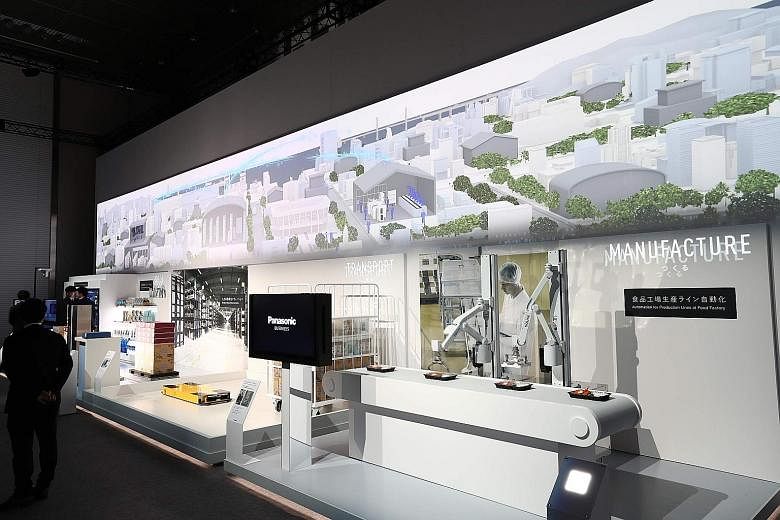Panasonic, one of Japan's best-known tech giants, has vowed to move beyond the mass production of home appliances to create smart products that can evolve intuitively to meet the needs of their end users. It also plans to make bigger inroads into China.
This comes as the company marks its 100th anniversary this year amid a slump in its traditional home appliance sector.
Chief executive officer Kazuhiro Tsuga said yesterday: "Going forward, we will not simply offer products and services that we have internally decided are good, but develop things with the assumption that users will want to continue customising and updating them according to their diverse needs."
He added that upcoming products will be launched "with full knowledge that they are intentionally incomplete". He explained: "This does not mean they are defective, but rather they have the margin to grow to suit diverse needs."
Mr Tsuga made the points in a keynote speech opening a five-day Cross-Value Innovation Forum, which is effectively the firm's birthday bash to showcase its growth through the decades while presenting futuristic prototypes.
In the works are smart homes equipped with, among other things, sensors that can detect one's mood and automatically select lighting and ambient music.
Panasonic also showed off a bouldering wall that can detect the vital signs and progress of climbers as they tackle more difficult courses, and warehouse robots that can automatically detect a shortage in items and alert suppliers to restock.
Mr Tsuga said: "In Japan, we tend to discard things and design products without thinking about their life cycle or 'upgradability'."
He added: "It used to be profitable to look at consumers as a single mass for whom we can mass-produce items, but this is no longer sufficient."
Panasonic was set up on March 7, 1918, as a three-man firm under the name Matsushita Electric Housewares Manufacturing Works, which produced light bulb sockets.
It quickly grew in the pre-war years to develop bicycle lamps, electric irons and radios. After World War II, it rode the technological boom of the 1950s to develop washing machines, monochrome television sets, automatic rice cookers and home air conditioners.
Panasonic, diversifying beyond its home appliance business, has invested heavily in manufacturing car batteries in a tie-up with Tesla.
It is also looking to make even bigger inroads into China, Mr Tsuga said, by partnering companies like e-commerce giant Alibaba.
Alibaba's chief executive for Japan Makoto Koyama yesterday told a panel discussion that Panasonic could better tap big data to glean consumer behavioural insights.
Panasonic has also partnered hotpot chain Haidilao, under which it provides robots that can sort ingredients and serve food. On Sunday, the two companies launched in Beijing what they described as the world's first eatery with a fully automated kitchen.
Panasonic is working with Chinese construction software developer Glodon and energy management firm Beijing Linkdata Technologies to build prefabricated homes in Xi'an in north-western China.
Mr Tsuga said: "We are going to China and communicating with Chinese entrepreneurs to learn from the Chinese market - and this is a general direction so that we will not end up being just a simple component manufacturer."

